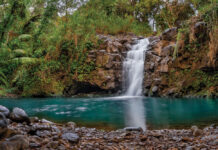Upcountry hike traces history of reforestation, preservation efforts.
By Kyle Ellison
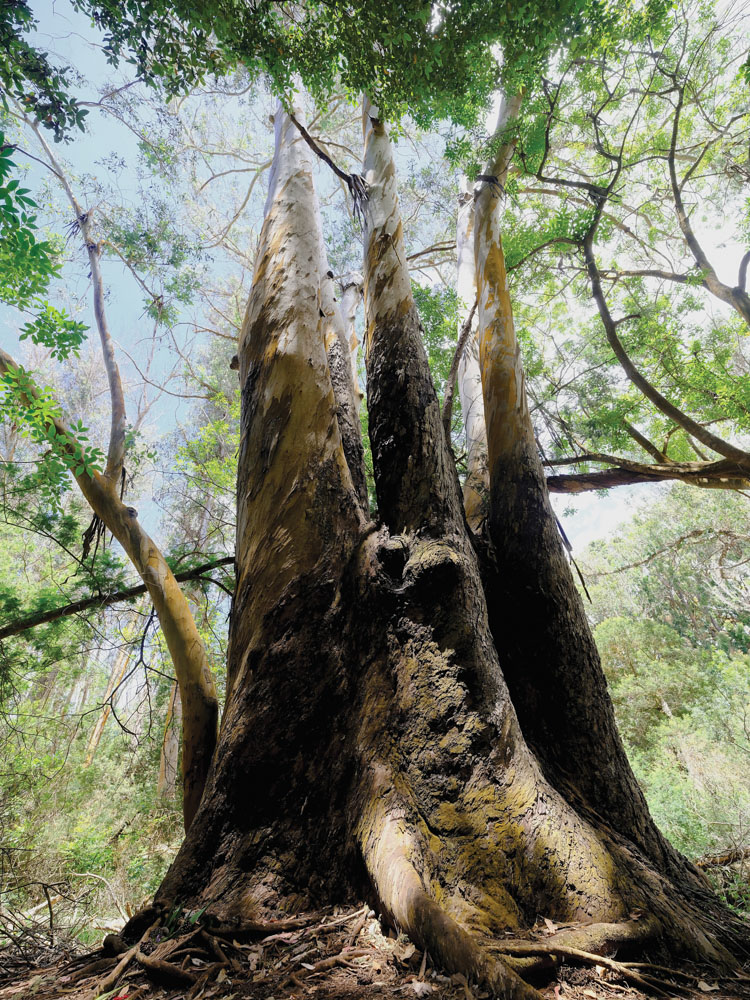
There’s a saying that inventors and entrepreneurs are mildly hallucinogenic because they often see things that aren’t actually there – only visions of what could be. Ralph Hosmer – the Territory of Hawai‘i’s first Superintendent of Forestry – likely wasn’t on hallucinogens, but he did have grandiose visions of Hawai‘i’s next big cash crop: Timber.
Ralph Hosmer’s efforts to bring trees back into heavily harvested areas left the canopy looking a little different. Imported trees ranging from pines to eucalyptus grew, but were not enough to get the timber industry to a productive state. This era in Hawai‘i’s history is still sprouting, however, and can be seen in a protected area near Waihou Spring.
Although the timber industry never made it big, Hosmer, to his credit, wasn’t entirely wrong. Early 19th century traders made boatloads of money exporting ‘iliahi, or sandalwood, to China, and over 13,000 railroad ties were made from Hawaiian ‘hi‘a wood and shipped to California.
Unfortunately, that early timber trade left Hawai‘i’s forests in ruins, and so Hosmer devised a plan to bring it back – albeit with introduced species. He imported everything from eucalyptus to pine, but at the end of the day it just couldn’t compete with places like Oregon and California, which were flush with redwood and fir.
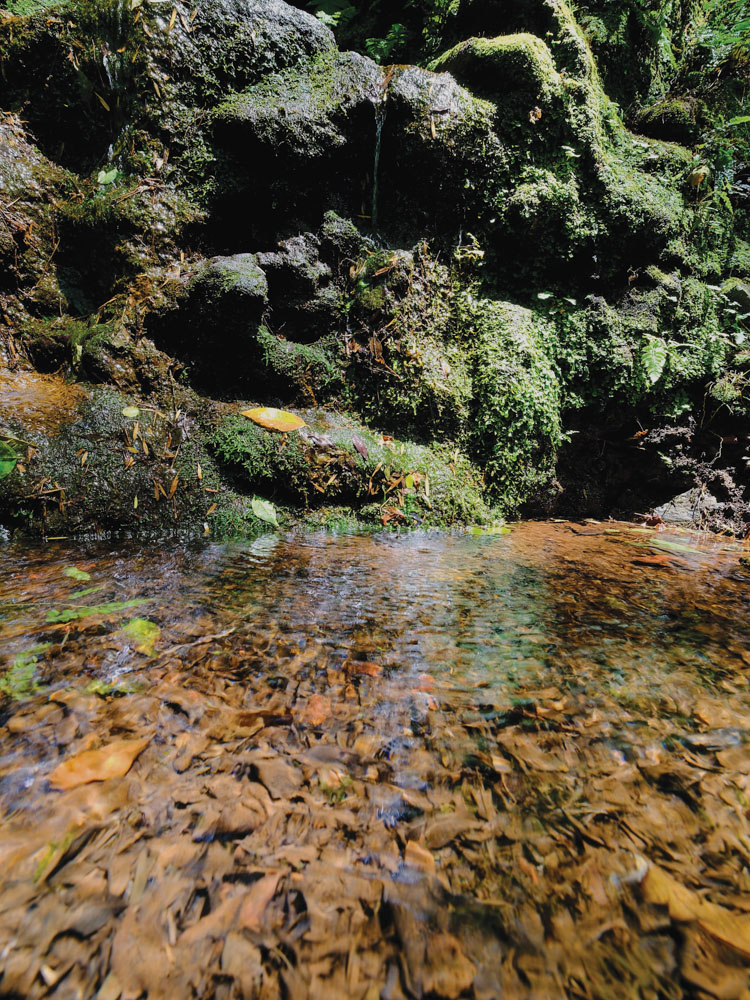
While the timber industry never got off the ground (economically, at least), you still can catch a peek of this era in Hawai‘i’s history on a shaded stroll through Waihou Spring Forest Reserve, near the top of Olinda Road above Makawao. Up here, at 3,900 feet, the air is still as cool and crisp as it would have been in the late 1800s, when all the trees disappeared.
Much of this area across Haleakala’s slope was cleared for pastureland and cattle, and though native trees, such as koa and o‘hi‘a, were likely once abundant, by the time folks like Hosmer discovered its importance, nearly every tree was gone. Nevertheless, despite the clear cutting, which decimated the landscape, this area high above Makawao town had one natural feature – Waihou Spring – that made it stand out as somewhere in need of protecting, restoring and help.
As one of the few perennial springs on Haleakala’s western slope, Waihou, or “new water,” play host to fresh, cool water that percolates out of a natural amphitheater at the head of Kailua Gulch. The rugged ravine forms part of the reserve, where massive, moss-covered, emerald-green boulders are backed by the steady “drip, drip, drip” of water seeping from the rocks.
Most notable, however, aside from the beauty, is the network of tiny caves. By the time that Waihou Spring Forest Reserve was created in 1909, Haleakala Ranch had bored tunnels into the cliff face to supply fresh water for their cattle. While the system of water delivery developed by the ranch is no longer in place today, some records suggest that Waihou Spring was capable of supplying Haleakala Ranch with 15,000 gallons per day.
By 1913, after the reserve was established, and in an effort to bring back the forest, the ranch agreed to fence out the cattle, and in 1919, the Maui Agricultural Company set to work on reforesting the area. For the next three decades, even though early trials had proven that timber wouldn’t be economically viable, extensive planting took place at Waihou to bolster the greater watershed and bring in more clouds – and rain.
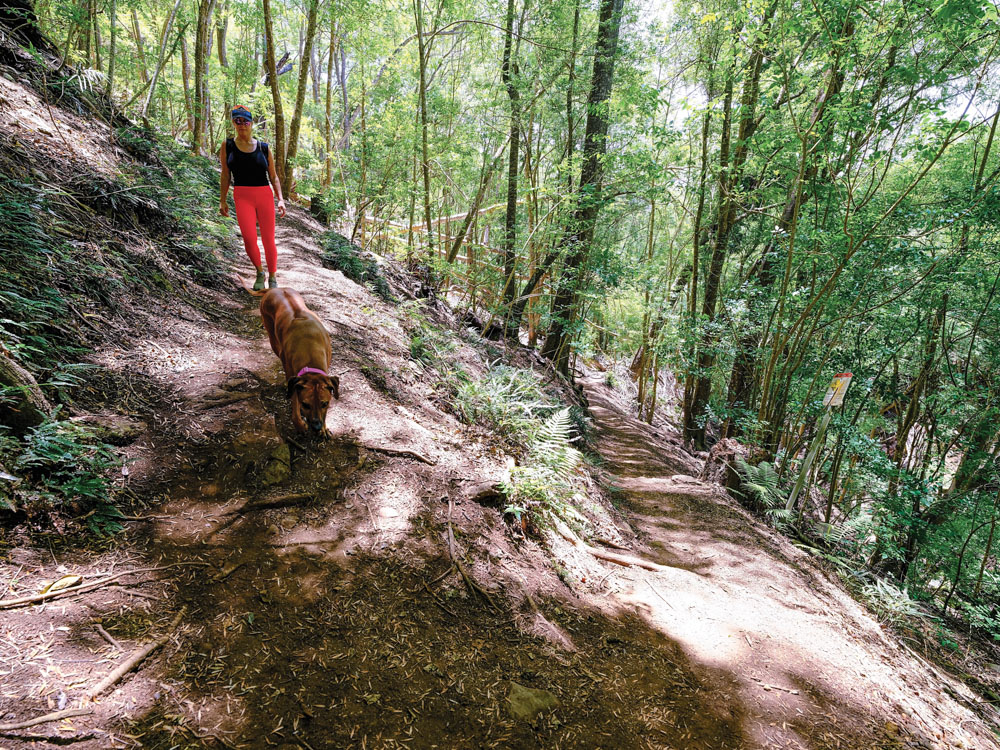
Now, after over a century of growth, this misty, short, family-friendly trail forms an upland escape that feels as if you’ve departed the Hawaiian Islands, and walked all the way to the Pacific Northwest, Sierra Nevada or Cascades. Were it not for the song of forest birds and a koa tree just above the gulch, you’d be forgiven for thinking the steep, snaking entrance road somehow crossed the entire Pacific.
Within minutes of leaving the parking area, and wandering into the trees, it’s as if you’ve entered a parallel world where kids (and kids at heart), explore the trail system through forests and meadows that burst with green. Pine needles form a light brown blanket that covers much of the trail, which is punctuated by piles of dark brown pinecones, and the smell of coniferous bliss.
Most notably, the trees are planted in rows, creating the sense that – despite being outdoors – you’re walking amidst something that’s somewhat unnatural; man-made nature, if you will.
Still, hikers who stroll into the forest are afforded three different hiking options, based upon not only their appetite for adventure, but also, leg and knee strength. The main trail is a “lollipop” route, where a single path leads in from the road, and then turns into a loop. Turn left; turn right – it really doesn’t matter, as you’ll end up back where you started.
The total trail length, should you hike the whole loop, is about 1.7 miles. The trail is mostly flat with small inclines, although factor in that up at this altitude, the air is a bit thinner than back down at sea level, so take some deep breaths, and take it slow.
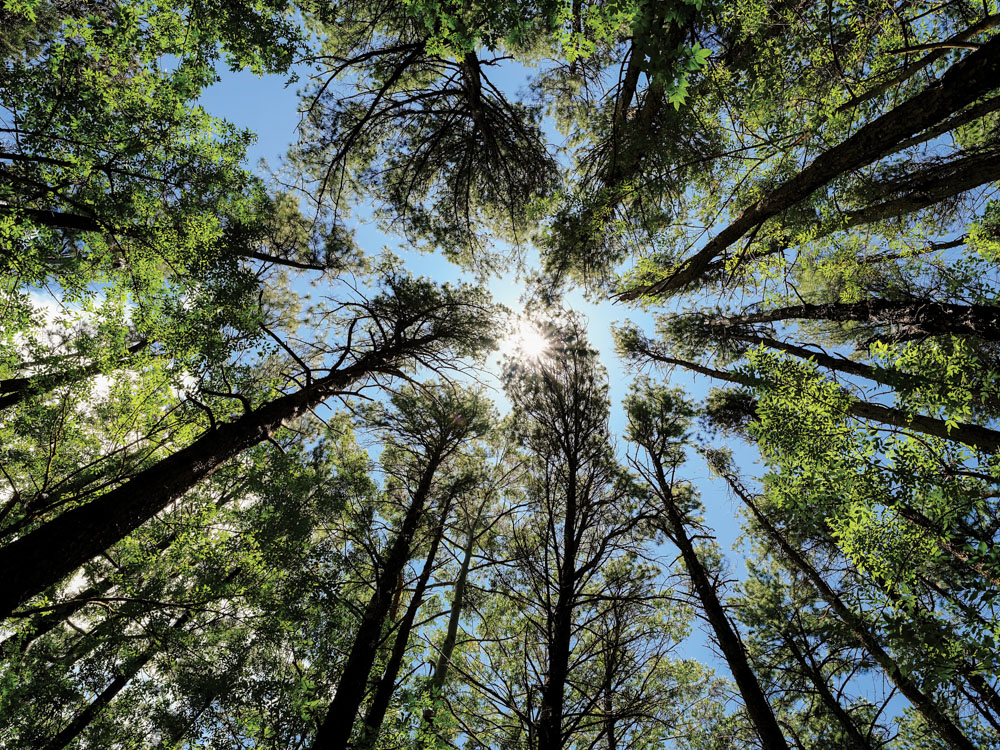
For the intrepid, fit, and adventurous, however, you can embark on a spur trail that descends a series of steep, slippery, leaf-covered switchbacks that lead to Waihou Spring. The reward, for the quad-burning descent, is the chance to experience a natural wonder unlike anywhere else on the island, where rocks the size of automobiles appear to have either dropped from the sky, or tumbled down from the towering cliffs that rise around on all sides. It tacks on another 1.5 miles, but it changes the trip from “a walk in the woods” to a mystical journey back in time. There’s a sense of hidden magic down here, having seemingly discovered a fascinating nook where history, curiosity, and raw, natural beauty all combine to create a time-stopping moment that puts your senses on alert.
Birdsong, footsteps, the wind in the trees – it all seems louder as it echoes and bounces off massive, vertical walls. The sudden appearance, and abundance, of water creates a setting where the forest springs to life, where you can see the water, hear the water, even get rejuvenating smells of fresh water as it fills the air that hangs all around you with a lung-filling nectar of life. Nature, in its glory, is happening all around you, yet there’s also a stillness that makes you feel small, since this setting, this moment, this grandstand of green, is completely indifferent to human existence; if we disappear, it remains.
While exploring the rocks and caves seems enticing, as part of the State of Hawai‘i’s Na Ala Hele trail system, the hike officially comes to an end when you reach the bottom of the enveloping gulch, since falling branches – particularly in high winds – can create dangerous conditions for exploring. So, too, have hikers slipped on the descent down into the gulch, so caution, courage, patience – and good shoes – are strongly encouraged should you go.
At the end of the journey, once back at your car, having made the steep trek back up, you may even wonder, much like those visionaries, if what you’ve just seen is real. Considering how different, unique and surreal this tucked away corner of the island is, it can’t possibly be a place you just walked to – it all could have been just a dream.
Click here to subscribe to Maui Nō Ka ‘Oi Magazine




